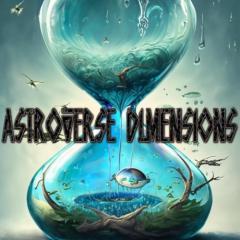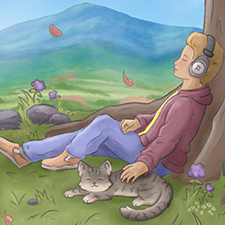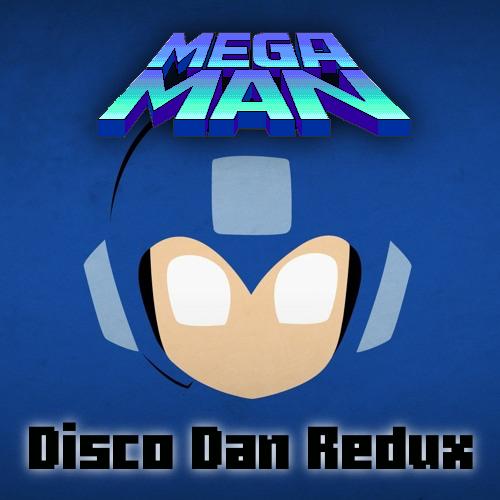All Activity
- Past hour
-
DarkeSword started following Is there any way to listen to the submitted remixes?
-

Is there any way to listen to the submitted remixes?
DarkeSword replied to Master Mi's topic in Site Issues & Feedback
No. The judging process is between the remixer and the panel. If, after a rejection, an artist wants to share the track, they can do so themselves in the Workshop. - Today
-

Trance gate on bass lines.
Tyni Beats replied to Audiomancer's topic in Music Composition & Production
Would love to hear an example <3 -
Audiomancer started following Trance gate on bass lines.
-
So I just stumbled upon this....a happy little accident, as it were;) I was meaning to put a trance gate on a pad in an original that I am working on, and accidentally put it on the bass track instead. Hit play, and I'm thinking wtf..... hey, that sounds great:) adjust the parameters a bit, and it can really clean up a bass line that you're wrestling with. I would have used this trick on my ReMix that got posted if I would have discovered this before:) Hope this helps someone!
-
I recently wanted to listen to some of the remixes submitted for evaluation, but in the initial post I could only find links to the original source soundtracks that served as inspiration for the remixes - but never the actual remixes themselves. Would it be possible to create a common way for all OCR members to listen to the submitted remix via audio stream or something similar? It would be really interesting to be able to actively follow the evaluations in this way and get a sense of what is particularly important in remixes submitted to OCR, what is sufficient in terms of composition and mixing, and where more work needs to be done on the remix.
-
 Master Mi reacted to a post in a topic:
Clipping in OC remixes and modern soundtracks - loudness war versus loudness norms
Master Mi reacted to a post in a topic:
Clipping in OC remixes and modern soundtracks - loudness war versus loudness norms
-
Tyni Beats changed their profile photo
-
A PLANT joined the community
-
 Subz1987 reacted to a post in a topic:
Lufia II: Of Gods and Men
Subz1987 reacted to a post in a topic:
Lufia II: Of Gods and Men
-
 Subz1987 reacted to a post in a topic:
Star Fox Remix Album - Potential OC ReMix Submission Candidate!
Subz1987 reacted to a post in a topic:
Star Fox Remix Album - Potential OC ReMix Submission Candidate!
-
@Unknown Pseudoartist I think the desire for more dynamic and consistent loudness levels between different soundtracks and other audio programs began back in the 1990s. Perhaps some of you still remember those days when you would frantically reach for the remote control as soon as a commercial break suddenly interrupted your favorite show, often mixed much louder than the regular TV program. You couldn't just stroll over to the refrigerator and grab a portion of lovingly prepared sashimi along with the rest of the hearty 7-course meal to make the most of the commercial break in a witty and culinary way, taking on the battle against continuous advertising stupidity with copious amounts of brain food. Sometimes you really had to hold down the volume down button for a few seconds or, better yet, press the mute button on the remote control so that the stork wouldn't fall out of the neighboring tree in fright 'cause of the commercial sound pressure level. With the development of methods and metering devices for measuring the loudness of sound events, soundtracks and all kinds of other audio programs, which ultimately led to the EBU R 128 guidelines created by far-sighted sound engineers, it was possible to satisfactorily solve not only the problem of loudness jumps between successive audio content. At the same time, a standardized basis was created to allow for much more dynamics, especially in the field of music. If you are interested in the smaller details and background information, I recommend the compact Wikipedia link on this topic: https://en.wikipedia.org/wiki/EBU_R_128 … Incidentally, EBU R 128 is not only a basis that allows much more dynamics in music and other audio contributions. EBU R 128 also limits the dynamics within a soundtrack or other audio program in order to ensure an enjoyable listening experience without causing permanent hearing damage. For example, you won't be startled by the extreme sound level of a realistic gunshot at close range in the middle of the gentle rustling of leaves in a film. This is achieved by additional parameters within this loudness standard, which, in addition to the program loudness main parameter (where the entire soundtrack or audio program is measured from start to finish and a target loudness value of -23 dBFS is aimed for after complete measurement), would primarily be the following parameters: 1) Maximum Short-term Loudness ------------------------------------------------------------ This refers to the continuously measured loudness of the last 3 seconds throughout the entire soundtrack or audio program, which must not exceed a value of -18 dBFs at any time. For example, -17.9 dBFS over a recorded period of 3 seconds would no longer be permissible. 2) Maximum Momentary Loudness ------------------------------------------------------------- This refers to the continuously measured loudness of the last 400 milliseconds throughout the entire soundtrack or audio program, which must not exceed a value of -15 dBFs at any time. Accordingly, sporadic sound effects such as a gunshot with a maximum level of -14.9 dBFS or higher over a measured period of 400 milliseconds would no longer be permissible. It is not necessary to comply with the maximum values of both additional parameters together. It is sufficient if either the Maximum Short-term Loudness value or the Maximum Momentary Loudness value is complied with during a loudness measurement for a soundtrack or other audio program such as a podcast or commercial. In conjunction with the primary program loudness target value of -23 dBFS (with a permitted tolerance of +/- 0.5 dB), this limits the dynamics to a level that is tolerable for human hearing and at the same time provides an enjoyable listening experience. You can read all about this in detail here: https://tech.ebu.ch/docs/r/r128s1v1_0.pdf … And as you can see in the image here, after a complete loudness measurement of my Crisis Core remix from start to finish, this remix is also well within the permissible parameter limits: I don't know exactly why the Maximum Short-term Loudness value is already flashing red here with a measured value of -19 dBFS (according to the EBU R 128 guideline, up to -18 dBFS would be permissible) - but perhaps the values have been slightly adjusted over the years. And since EBU R 128 only requires you to adhere to the maximum value of one of these two additional parameters anyway, I'm still well within the green range with the Maximum Momentary Loudness value, although my main focus is primarily on the target program loudness of -23 dBFS. ... Another interesting aspect in connection with the implementation of EBU R 128 in broadcasting is the fact that, towards the end of 2023, an extended guideline for streaming platforms was also initiated: https://tech.ebu.ch/docs/r/r128s2.pdf It would be really awesome if this became standard practice in the near future, because then it would no longer be worthwhile to stubbornly master soundtracks for maximum loudness (since the soundtrack would be reduced to -23 dBFS anyway), but instead every musician would have the same fair opportunity to make their compositions as dynamic and lively as possible at a standardized loudness level. … Based on EBU R 128, the resulting expanded dynamics in music, and my “Life Force” mixing concept, which I have developed extensively in recent years, I want to demonstrate with my upcoming video game remixes and some larger original compositions that dynamic music can sound really good, organic, and lively in every conceivable music genre - from classical orchestral music to electronic music to rock and metal - and that it can be superior to the often dynamically limited “compressor music", especially in terms of sound quality.
- Yesterday
-

What are you listening to?
Deathtank replied to PassivePretentiousness's topic in General Discussion
-
Ridiculously Garrett started following Ocarina of Time: Lon Lon Ranch Post Punk
- Last week
-
Zora's Domain 2025-07-26 1025.mp3 Dusted this old thang off to do some mixing and shtuff. Ready to submit...? In the chamber. Added some compression, fixed reverb on all tracks, added some reverb automation on the synth chords because why not, added some samba instruments at the end, I guess I'll call this city pop.
-
FINAL FANTASY VIII - The Extreme Remix
-
 Nitwit reacted to a post in a topic:
Disco Dan music
Nitwit reacted to a post in a topic:
Disco Dan music
-

Sonic & Knuckles "Million Dollar Death Trap"
Argle replied to Seth Skoda's topic in Post Your Game ReMixes!
There's a lot more variation than I remember hearing in Discord, nice. I would agree with Audiomancer on the sustained saw notes, in addition to his suggestions you could also fade the note a bit as it's held. -
Grabbed it. Thanks Audiomancer.
-
 The Coop reacted to a post in a topic:
An OverClocked Christmas v.XIX...
The Coop reacted to a post in a topic:
An OverClocked Christmas v.XIX...
-
https://drive.google.com/file/d/1AJssa1PUeCC5Y97RUUI30Qj8KBZooWyc/view?usp=drivesdk This is a Christmas thingy I put together. I did this with Caustic 3 on an old phone. I like the Amiga-like MOD format:) Edit: I believe the song is actually called Gloria, and I refer to this as Angels Dancing on High.
-
Wanted to highlight the jazz-inspired stuff from ODST, since not everyone's heard it: link The Halo OSTs are pretty convenient because all the content is used in-game sans the bonus tracks at the end of the first few albums. All of the albums with long suites (sans Halo 1) also have names for their "sub-tracks"; a lot of the ODST clips above are part of bigger suites/mixes. I can help people verify stuff is used in-game if anyone has any questions about it. I'll put feelers out a few more times before looking at starting this up in 2026, I think it'll probably have more draw than the guided Fusion album.
-
 Thirdkoopa reacted to a post in a topic:
*NO* Sonic Forces "2017 Chill Str."
Thirdkoopa reacted to a post in a topic:
*NO* Sonic Forces "2017 Chill Str."
-
 Master Mi reacted to a post in a topic:
Clipping in OC remixes and modern soundtracks - loudness war versus loudness norms
Master Mi reacted to a post in a topic:
Clipping in OC remixes and modern soundtracks - loudness war versus loudness norms
-
I see I was batsignaled here! I think the other two judges assessment of the track as it stands is right on the money - I see what you were trying to do with the EQ here, but actual lofi production is a lot more nuanced than that. I'm not going to harp too much on that issue, and try to focus my vote on suggestions for tools, resources, and techniques that will help you get closer to your vision. I do want to say that, when comparing this to the source, I like the sounds that you chose and feel like you've got a good ear for sound selection, especially given the high-energy nature of the original track - this approach totally brings something new to the table that, when executed to its full potential, could be really cool! I particularly love the bass sound that seems to have some resonance sweeps going on, it's really unique! So, to recap - conceptually, this is a strong idea and you've got some good building blocks to work off of, but compositionally, it's still structurally too similar to the original track and needs more of your own flair to the arrangement in order to clear OCR's bar. However, the production quality is the main hangup, as there's a few major things that need addressing. I'll bullet point a few primary ones and then share some resources below: Remove the master EQ cuts that you have on your track - I sometimes do apply a very gentle EQ reduction to my lofi tracks to help with tone shaping, but they're usually a high shelf, not a high cut, and I'll apply them much closer to 10kHz and reduce by maybe 3dB - definitely not a full blown cut of almost all of the high frequencies! Instead, I would put EQ/filters on each of your instruments or instrument groups and shape them individually. Play around with using filters that have a resonance built into them too, rather than just a plain EQ cut, which will help character and personality to the track. It will sound much more natural and full if you apply these filters at different frequencies depending on which instrument you're working with. Other ways to achieve that lofi sound is with tape effects like pitch wobble and saturation - lofi production isn't just about cutting out frequencies, but also about doing more to warp/degrade the frequencies that you DO have. You want to make sure that your bass frequencies are still present - right now, there's not much in the way of bass, and the kick drum is much too subdued to fill that role either. This is where comparing with reference tracks will help. The drums and bass feel weak overall, as if you also applied a low cut to the track that removed a lot of the sub frequencies, or just mixed those elements far too quietly. Add textural layers - things like foley sounds, vinyl crackle, or even room noise, when mixed *very* subtly, can give your mix a sense of space. You don't want to overdo it, especially with vinyl crackle samples, but a tasteful dash of it will go a long way. Use reference tracks with a spectrogram plugin. I can't stress this one enough - download some of your favorite lofi tracks and load them up in your project file, then, using a plugin like SPAN, look at how the frequency spectrum is filled up by those tracks and then compare it to your own. You can learn a lot just by comparing your track to a finished track that already sounds good to you. There's a lot of resources you can use to help execute this - there's a few plugins I'll suggest, but I would avoid trying to throw more plugins at your track to fix the problem. The issues I'm hearing stem more from experience and methods rather than not having good enough plugins. Izotope Vinyl - this is an "all-in-one" lofi plugin that you can apply to your master track (again, I STRONGLY recommend not going overboard with this) that can do EQ shaping, tape wobble, and even introduce mechanical noise/hiss/scratches to emulate playing your song off of a record player. It's very easy to overdo it with these sounds, but this is a good starting point to show you how these different techniques will impact your sounds. SPAN - this is a free monitoring plugin that shows a visual representation of how the frequencies in your song are distributed. You can't solely mix with visual cues - eventually, you've got to use your ears - but when you're troubleshooting, this can be a great way to diagnose problems with your mix, and compare them to reference tracks. Lo-fi Reference Tracks - there are a number of songs published on OCReMix that are free to download and use as reference tracks. These have all passed the Judges Panel, so it should give you a good idea of where your track needs to be in order to pass that same bar. OCR Workshop - when in doubt, we have an active Workshop discord that you can use to get additional community feedback or participate in Office Hours events where you can submit your track for realtime critiques from the panel of Sages. I hope this is helpful and you continue to grow your skills and take advantage of the community resources we have available to help you get there :) NO
-

Sonic & Knuckles "Million Dollar Death Trap"
Audiomancer replied to Seth Skoda's topic in Post Your Game ReMixes!
I like the added decorative additions. Your saw type lead that you use, would it be possible to slide in some effect like vibrato, detune, or oscillator sync on the longer notes so they have a bit of movement to them? Break time at work is over, this is all I have now....also thanks for your response to my question:) -
Jaymansallstarshow joined the community
-
Shadowlight changed their profile photo
-
vBoogs changed their profile photo
-
Hey guys. Long-time forum lurker here. I noticed the links died in the post, and as Disco Dan has done an amazing job with his compositions I would hate for access to get lost. Please see the link for a compilation I put together, artwork and all, incorporating the track list of forum member Zen Frazier. Enjoy newcomers & longtime fans of Disco Dan's! https://www.mediafire.com/file/5xq10vx4sbhw7db/Mega_Man_-_Disco_Dan_Redux.zip/file P.S. - In digging through my archives, I noticed that one of the versions "Magnet Man Goes West" has a different production style than the usual one. Thus, I've added that on as track #22 as an alternate version.
-
vBoogs joined the community
-

Sonic & Knuckles "Million Dollar Death Trap"
Seth Skoda replied to Seth Skoda's topic in Post Your Game ReMixes!
Newest revision. Added some transition sfx, added new leads and a couple of other things. mddt7.mp3 -

Sonic & Knuckles "Million Dollar Death Trap"
Seth Skoda replied to Seth Skoda's topic in Post Your Game ReMixes!
Thank you for taking a listen! And to answer your question: kinda. The kick is layered with an 808, which is tuned according to the main bass note playing behind it. The kick itself remains the same throughout the piece. Low frequencies of the kick reduce the low frequencies of the 808. Low frequencies of both of those reduce the low frequencies of the synth bass. All via filter sidechains. Best I can do (I think) to get loudness without sacrificing too much audio dynamics. New revision incoming btw -
Hey! Honestly I didn't read 100% of what you wrote yet, but I seen you posting similar walls of text regarding concerns on music production, and the kind of crussade you are going is interesting, to say the least. People may agree or disagree with your thoughs, and may like or dislike your own mixes and stuff. But at least you are questioning these things and going your own way with them, rather than simply pretending to fit the current trends on whatever works or sells best, and that's an attitude I personally applaude. My own concern with the so-called loudness war as a musician now is more about a simple fact: to make mixes that sounds good and clear can be hard enough, but to make it to sound good and clear AND also loud as heck... definitively not a comfy thing. I'm not fond of mixes that are too much dynamic either, since it can be annoying (as a listener) to listen to music that can be totally quiet at a moment and extremely loud at another moment. It's just not a pleasant experience when you have to keep fingers at the volume buttons to adjust it. But everything sounding hella overcompressed and loud can be a headache for real, and so I totally understand and even relate to the special charm on older productions, even though oftentimes that might be a bit too raw. Funnily enough I see the exact opposite trends on other media forms, like movies, series, animes, etc. When people is talking you have to rise volume because you can't hear the words right, but when action happens your ears are screwed and have to decrease it. It's like they assume everyone watches stuff in a home cinema, but that's a pain when you just use an ordinary computer in a small bedroom with regular 2.1 speakers and living with more humans at home in near rooms.
-
ThePlasma changed their profile photo
-
Yeah this isn't lo-fi, it's just EQd harshly at 3kHz and it sounds muffled. Emunator can definitely provide better advice here, and explain the process, but proper lo-fi involves different types of processing, EQ and saturation than just cutting off the top end. There are entire plugins dedicated to lo-fi production. The first one that comes to mind is LO-FI-AF by Unfiltered Audio. The arrangement is very conservative, and although it has some nice adaptations it could really use more personalization and variation. The instruments and drums all sound very robotic and stiff. The piano especially needs some humanization. The writing is very repetitive and the energy is static throughout the piece, with no breakdown and the drums play all the way to the last section. The same patterns play over and over and in combinations but they never do anything interesting once established. The ending is brief and disappointing. As for mixing and volume-balancing, I can't even comment on it in its current EQ-obliterated form. I agree with proph that our Discord workshop channel will be a great place to get further advice and guidance on this one! NO
-
Hey everyone, I've been busy and had my hands full as I am currently in the middle of solving the things of moving from one country to the other. This is the main reason why I have not focused on posting in the forum (I'm sorry about that!) But here's the latest catch of episodes for you all to enjoy Episode #57 - Tumult Kollektiv NGC Special (Feat. Leonhard Van Voorst) Spotify: Youtube: Episode #58 - Pelle Cahndlerby NGC Special (Feat. Pelle Cahndlerby) Spotify: Youtube: Episode #59 - PaperKlay Special (Feat. Nathan Ross) Spotify: Youtube: Haste #60 - Haste Special (Feat. Karl Flodin and Erik Lyding) Spotify: Youtube:












midsize.thumb.jpg.96bce160e1fe6261a869a37ac8562a69.jpg)


